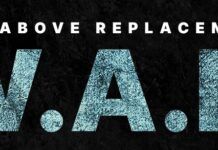When dragon boat crews want to go faster, they tend to lift the stroke rate. This is one of the biggest mistakes I see in dragon boating. The belief that to go faster one needs to paddle faster is true to a certain extent but it is very easy (too easy) to go too far and end up going slower. This post will explain why paddling at higher stroke rates does not always work and how to determine what the best stroke rate is for your crew.
What is Speed
Does increasing the stroke rate increase the boat speed?
What determines the speed of your dragon boat? How do we go faster?
To answer these questions we need to define speed and what affects speed.
Speed is defined as covering a certain DISTANCE in a specific amount of TIME. Or distance divided by time (distance/time).
For the speeds we race at, we will define speed as METERS PER SECOND (meters/second).
There are a variety of variables that impact our speed, including the paddling technique used, the wind, the current, the water conditions, fitness level of the paddlers, the design of the boat, and others.
To help us get to the answer to our questions, I’m going to introduce you to some algebra.
SPEED is a multiplication of two variables.

What are these variables? Let’s find out.
What Determines Speed?
You’ve all heard of the first variable. “PADDLE FASTER” “LIFT THE RATE!!” “UP!!”
What they are actually talking about, is STROKE RATE, or the number of STROKE CYCLES PER unit of time. Typically for dragon boating, we use STROKES PER MINUTE.

Since, in this post, we have SPEED designated as METERS PER SECOND, let’s define STROKE RATE as STROKES PER SECOND.
Our Speed formula now reads:

So it looks like lifting the stroke rate will make the boat go faster (according to the formula so far) Right?
But there is this other variable, “variable 2”, that makes a huge impact to speed. And I believe even more so than STROKE RATE.
Also this “variable 2” and STROKE RATE affect each other.

Remember that last sentence!!!
What is this mysterious “variable 2”? Let’s use algebra to find out.
What is the Missing Speed Variable?
Algebra rule: The left hand side of the equation has to equal the right hand side.
So here’s the formula again:

So if the answer on the left is in metres per second then the answer on the right has to work out to be in metres per second. Otherwise it will break the algebra rule.
Currently the right hand side only has strokes per second multiplied by some unknown variable.
In order to get metres per second on the right hand side, we need to use “variable 2” to get rid of “strokes” on the top line and replace it with “metres”.
Something like this:

So “variable 2” is metres per stroke or STROKE LENGTH, which is how far the boat travels from one catch to the next (in-water and in-air distances combined).
Therefore

STROKE RATE is how fast we are paddling, and STROKE LENGTH is how effective those individual strokes are at propelling the boat forward.
So Do We Lift the Rate or Not?
The answer looks simple.
Do a high STROKE RATE and a long STROKE LENGTH and we will get a high SPEED.
The end!!
Not so fast!!! This is EXACTLY where many clubs and coaches make a BIG mistake.
Read on.
…. The remainder of this content is for members only…













